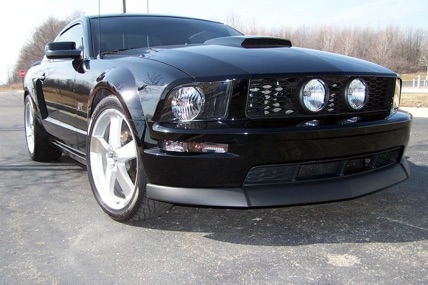FRPs Hot Rod Camshafts
Using Ford racing products hotrod camshafts
Near the end of 2008, Alternative Auto started a mid sized project that we’re simply gonna call “Project N.A.”. Essentially what this tech article will be centered around is the newly available replacement cams for 3-valve applications from Ford Racing they have labeled as: the “Hot Rod” cams. One of the key reasons we’re looking at, and using these FRP cams is that they can be installed with out a valve spring change… Which would ordinarily be very difficult while the heads are still on the motor, sitting in the car.
Every one loves the old school rump, or loapy idle of a good sized camshaft in any V-8. A lot of folks aren’t used to hearing a nice/rumpy idle coming from a 4.6L application. Here at Alternative Auto, we’ve been getting comfortable and installing larger cams in the 4.6L scene for several years — with great result in performance, drivability, and what a lot of people are looking for most of all is a…. “Tough sounding idle”.
The car that we’ll be working with is a 5-speed automatic equipped 2009 Mustang GT convertible, with only 350 miles on the odometer when she got dropped off for all the work.
All though the cams for the most part are the focus of this article, this Mustang is getting an entire package to enhance its over all performance and acceleration with out a blower or NOS. Some or most of the other parts it will be getting are to take advantage of, and compliment the cams too. And to just plain squeeze as much as we can with out going further into the motor.
Here is basically every thing that’s going to happen at one time on this virgin GT.
• FRP HotRod 3-valve camshafts.
• BBK 1-5/8”dia. long tubes & 2-1/2” X-pipe with cats.
• C&L air box and filter kit.
• 3-chamber/40 series FloMaster Mufflers and big tips.
• Two additional 2-1/2” resonators after cats to tone down exhaust pop & rasp’s.
• 2- pc underdrive pulley’s.
• Stallion 3500rpm stall torque converter.
• 4.10 ring and pinion in place of the stock 3.31’s.
• Mobil-1 oil change
• Complete custom dyno, and trans tuning from Alternative Auto using SCT.
• And for appearance it will get lowering chassis springs, chrome valve covers.
We’re not getting any deeper into the engine at this time. Also we’re not changing the throttle body, because we found minimum gains from those, and above all — drivability problems with them on the “Throttle by wire cars”.
Although what it does on the dyno at the rear wheels is important. The key thing is trying to get a very large improvement in 0 to 60mph, and ¼ mile performance out of this whole performance package. We did not get this new convertible down the ¼ mile for a base-line test before any mods were started with. But it’s pretty well known that totally stock 2005 and up automatic GT’s run very high 13s to more typically very low 14’s in the ¼ mile with good conditions over all.
This GT will not see any weight reduction at all, and not a whole lot of things to really enhance ¼ mile performance in terms of suspension, wheels and tires (which can compromise day-to-day drivability). Only the package with camshafts described above. The goal in the ¼ is mid to high 12s by simply leaving it in “Drive” and punching it, and let the car do the rest.
I also want to mention that a good custom tune will always be required with these cams because of the drivability problems that will present them selves with larger & rumpy cams of this nature. As with hundreds of our other custom tunes we will get the most we can out of this package on 93 octane. Plus do our best to maintain (although rumpy) a good clean, stable idle with no surging up and down, or stalling. And we will strive for the best off-idle throttle response, cruise conditions and of course WOT as well.
Now, for the DynoJet Chassis dyno performance that we got out of it after some extensive time and effort on the Chassis dyno…. The final numbers came in at just under 307 RWHP and a tad under 300 RWTQ. A stock automatic GT like this would have come in at any where from 250 to 260hp at the rear wheels. And this ’09 GT is still rather new in terms of full engine break-in. Also it has larger/heavier 20” wheels, and tires which will attribute to a little less HP at the rear wheels as well. Some folks including myself believe that as you go numerically higher with the rear axle ratio as we did with this car (4.10s vs. stock 3.31s), that the RWHP will drop a bit with every step you go up with the axle ratio.
So no matter how you look at it – it gained about 50-55 RWHP over stock from essentially the cams, air-box, tuning, pulley’s, plus headers and exhaust. The gears and Torque converter do nothing for Horsepower gain, they only assist in acceleration and optimizing the over all package. It may seem rather pricey for what it gained over all at the rear wheels, but today’s small 4.6L are very optimized from the factory, leaving less room for parts, and tuning to squeeze big gains out of them, thus why supercharging 4.6L Fords is so popular these days.

